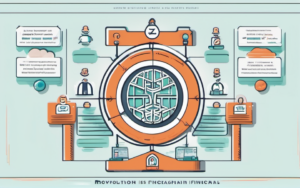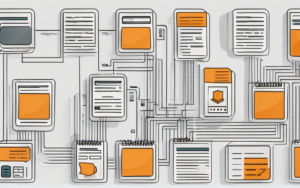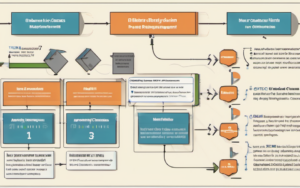Blockchain is far more than just the technology behind Bitcoin. These blockchain facts will reveal its surprising versatility and potential to reshape various industries. From revolutionizing supply chains to securing digital identities, its applications are incredibly diverse and constantly evolving. Let’s delve into some fascinating aspects of this groundbreaking technology.
1. Beyond Bitcoin: Unveiling Blockchain’s Diverse Applications
Blockchain technology, while famously associated with cryptocurrencies like Bitcoin, offers a much broader range of applications. Its decentralized and secure nature makes it ideal for various industries grappling with trust and transparency issues.
Understanding the versatility of blockchain is crucial. It’s not just about digital currencies; it’s about building trust and transparency into systems. Think of it as a shared, immutable ledger that everyone can access and verify, eliminating the need for intermediaries and reducing the risk of fraud. This has significant implications across multiple sectors.
1.1. Supply Chain Transparency and Traceability
Imagine tracking a product’s journey from origin to consumer with complete transparency. Blockchain makes this possible, providing an immutable record of every step in the supply chain. This enhanced traceability helps combat counterfeiting and ensures the authenticity of products, benefiting both businesses and consumers. This is a particularly useful application for luxury goods, pharmaceuticals, and food products.
1.2. Secure Digital Identity Management
One of the most interesting blockchain facts for beginners is its potential to revolutionize digital identity. Blockchain can securely store and manage personal data, providing individuals with greater control over their information. This is a significant step towards improving online security and privacy, reducing the risk of identity theft and data breaches. This is especially relevant in today’s increasingly digital world.
1.3. Revolutionizing Healthcare Data Management
The healthcare industry is another area poised for transformation thanks to blockchain. Securely storing and sharing patient medical records on a blockchain can improve data privacy, interoperability, and reduce administrative overhead. This could lead to better patient care and more efficient healthcare systems. This is a key area where blockchain can address long-standing challenges in data management.
1.4. Decentralized Finance (DeFi) and its Potential
Decentralized finance (DeFi) is arguably one of the most exciting applications of blockchain technology. DeFi platforms offer various financial services, such as lending, borrowing, and trading, without relying on traditional financial institutions. This can increase financial inclusion and offer greater transparency and efficiency in the financial system. The potential of DeFi is enormous, though it also presents unique regulatory challenges.
2. Demystifying the Technology: How Blockchain Works
At its core, blockchain is a distributed ledger technology (DLT). This means that the ledger isn’t stored in a single location but is replicated across a network of computers. This decentralized nature makes it incredibly secure and resistant to tampering.
The security and transparency offered by blockchain are its most attractive features. This is achieved through cryptographic techniques and consensus mechanisms.
2.1. Understanding Blocks and Chains
Blockchain is named as such because of its structure: a chain of blocks. Each block contains a batch of verified transactions, and once a block is added to the chain, it cannot be altered or deleted. This immutability is a cornerstone of blockchain security.
2.2. The Role of Cryptography in Ensuring Security
Cryptography plays a vital role in securing blockchain transactions. It ensures the authenticity and integrity of data by using complex mathematical algorithms to encrypt and decrypt information. This makes it extremely difficult for unauthorized individuals to tamper with the data.
2.3. Consensus Mechanisms: Maintaining Data Integrity
Consensus mechanisms are protocols that ensure all participants in the blockchain network agree on the state of the ledger. Different blockchain networks utilize various consensus mechanisms, each with its strengths and weaknesses. Examples include Proof-of-Work (PoW) and Proof-of-Stake (PoS).
3. Fun Fact #1: The Genesis Block and its Significance
The very first block in a blockchain is known as the genesis block. This block often contains a special message or data, marking the beginning of the blockchain’s history. In Bitcoin’s genesis block, for example, a newspaper headline about the impending financial crisis was included.
4. Fun Fact #2: Energy Consumption Concerns and Solutions
Some blockchain networks, particularly those using Proof-of-Work, have been criticized for their high energy consumption. However, newer consensus mechanisms like Proof-of-Stake are significantly more energy-efficient, addressing this concern. The development of more sustainable blockchain technologies is an ongoing area of research.
5. Fun Fact #3: The “Satoshi” Mystery and its Impact
The identity of Satoshi Nakamoto, the creator of Bitcoin, remains a mystery. This anonymity has fueled much speculation and debate, adding to the intrigue surrounding blockchain technology.
6. Fun Fact #4: Blockchain’s Role in Voting Systems
Blockchain could revolutionize voting systems by providing a secure and transparent way to record and count votes. This could increase trust in elections and reduce the risk of fraud. However, there are significant challenges to overcome before widespread adoption in this area.
7. Fun Fact #5: NFTs and the Digital Art Revolution
Non-Fungible Tokens (NFTs) are unique digital assets secured on a blockchain. NFTs have revolutionized the art world, allowing artists to sell and authenticate their digital creations, opening up exciting possibilities for creators and collectors alike. This is perhaps one of the most surprising uses of blockchain technology.
8. Fun Fact #6: Blockchain’s Use in Intellectual Property Protection
Blockchain can help protect intellectual property rights by providing a secure and verifiable record of ownership and creation dates. This can help artists, inventors, and other creators protect their work from infringement.
9. Fun Fact #7: The Potential of Blockchain in Combating Counterfeiting
The immutability of blockchain makes it a powerful tool in fighting counterfeiting. By tracking products through the supply chain, blockchain can help verify the authenticity of goods and reduce the impact of counterfeit products on businesses and consumers. This is a key area where blockchain can have a significant positive impact.
10. Fun Fact #8: Blockchain’s Impact on Global Remittances
Blockchain can reduce the cost and time associated with sending money across borders. This has the potential to benefit millions of people who rely on remittances from abroad. This is particularly impactful for those in developing countries.
11. Fun Fact #9: The Growing Importance of Blockchain Security Audits
As blockchain technology becomes more widely adopted, the importance of robust security audits increases. These audits help identify and address vulnerabilities, ensuring the security and integrity of blockchain systems. This is crucial to maintaining public trust in the technology.
12. Fun Fact #10: The Future of Blockchain Technology and its Potential
The future of blockchain is brimming with possibilities. However, challenges remain, particularly in terms of scalability and interoperability.
12.1. Interoperability and Scalability Challenges
Many different blockchain networks exist, and their lack of interoperability limits their potential. Similarly, scalability is a key challenge, as some blockchains struggle to handle a large volume of transactions. Overcoming these limitations is crucial for widespread adoption.
12.2. Emerging Trends and Innovations in Blockchain
Despite the challenges, innovation in the blockchain space continues at a rapid pace. New consensus mechanisms, improved scalability solutions, and the development of new applications are constantly pushing the boundaries of what’s possible. The future of blockchain is likely to be shaped by these ongoing developments.
The journey of blockchain technology is far from over. As we continue to explore its potential and address the existing challenges, we can expect to witness even more transformative applications in the years to come. The future is likely to be shaped by increased collaboration and a focus on solving real-world problems using this powerful technology.




